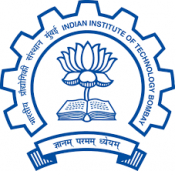
Project 3.6 (2020)
Background
While pavement design and construction sounds simple, rigorous scientific analysis and design of road pavement systems behaviour is extremely complicated. The Guide to Pavement Technology Part 2 (pavement structural design) [1] and the Mechanistic-Empirical Pavement Design Guide: A Manual of Practice [2] provide a set of guidelines for the design of pavement.
The guidelines for pavement construction [3] provides advice on the general requirements for the management of quality assurance, construction planning, earthworks, subsurface drainage, unbound pavements, stabilised pavements, sprayed bituminous surfacings, asphalt pavement and surfacings and concrete pavement. The durability of the pavement will be dependent on a variety of parameters all of which can be measured or inferred by contact or non-contact means. As an example, a recent innovation in pavement construction is the use of so-called “intelligent compaction (IC)” where rollers are instrumented with accelerometers to detect the stiffness change during compaction and is commonly used in the USA and Europe [4].
The compacted pavement layers are then subjected to moving and repeated traffic loads, which introduce major complications to modelling, such as cumulative damage accumulation, initiation and propagation of fatigue cracks, and complicated constitutive regimes with principal stress rotations.
Project Objectives
1. Review of:
current pavement construction methods
current practice in quality assurance
common shortcomings, faults and damage initiators in constructed products
identify critical parameters for the constructing quality products
2. Determination of the appropriate measurands and the corresponding measurement techniques to assess these critical parameters
3. Selection and evaluation of appropriate measurement technique(s) to determine the critical parameters.
4. Integration of these measurement outputs as parameters for new adaptative construction approach
5. Establishment of a laboratory based model to validate the measurement techniques.
6. Field trial of the measurement techniques
- Professor Wing Chiu (LCI - Monash University)
- Professor Jeffrey Walker (Monash University)
- Dr Ye Lu (Monash University)
- Professor Jayantha Kodikara (Monash University)






































